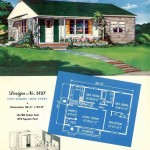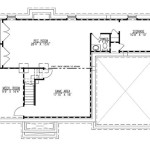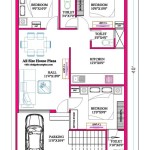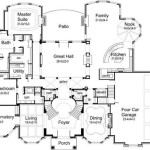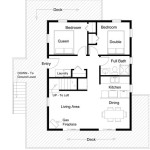Finding Your House Floor Plan: A Comprehensive Guide
Obtaining a floor plan for a house is often a crucial first step in various endeavors, ranging from home renovations and interior design projects to real estate transactions and insurance claims. A detailed floor plan provides a visual representation of the property's layout, dimensions, and structural elements, enabling informed decision-making and facilitating accurate project planning. This article outlines several methods for locating or recreating a house floor plan, providing detailed information on each approach's advantages, disadvantages, and associated resources.
The absence of a readily available floor plan can present significant challenges. Without accurate measurements and spatial understanding, it becomes difficult to visualize and execute changes to the property. This can lead to costly mistakes during renovations, inaccurate cost estimations for repairs, and difficulties in optimizing furniture placement and overall space utilization. Therefore, proactively seeking or creating a floor plan is a worthwhile investment for homeowners and prospective buyers alike.
Exploring Existing Resources for Floor Plans
The first step in acquiring a floor plan should involve exploring existing resources that may already contain the desired documentation. This approach is often the quickest and most cost-effective way to obtain a floor plan, eliminating the need for manual measurements and drafting. Several avenues can be pursued, each with varying degrees of success depending on the age of the house, its location, and the availability of public records.
One primary source to investigate is the local municipality's building department or planning office. These departments typically maintain records of building permits and approved construction plans for properties within their jurisdiction. These records may include floor plans submitted during the initial construction phase or during subsequent renovations requiring permits. Access to these records may require submitting a formal request and paying a nominal fee for retrieval and copying. Furthermore, access may be restricted based on local regulations and privacy concerns, particularly regarding the personal information of previous owners.
Another potentially valuable resource is the previous owner of the property. They may have retained original construction documents or floor plans from when the house was built or renovated. Contacting the previous owner, either directly or through a real estate agent, can be a simple and efficient way to obtain the needed information. However, it's important to consider that the previous owner may not have retained these documents or may be unwilling to share them.
In some cases, the mortgage lender or title company involved in the property's purchase may have obtained a copy of the floor plan during the appraisal process. These institutions often require a floor plan to assess the property's value and ensure compliance with loan requirements. Reaching out to these entities and inquiring about the availability of a floor plan can be a worthwhile endeavor. However, it's important to note that lenders and title companies may not retain these documents indefinitely and may have specific policies regarding the release of information.
For newer homes constructed within planned communities or subdivisions, the developer or builder may have floor plans readily available. These plans are often used for marketing purposes and may be accessible online or through the developer's sales office. Contacting the developer and requesting a copy of the floor plan is a straightforward approach, especially if the house is relatively new and the developer is still active in the area. However, it's important to verify that the available floor plan accurately reflects the specific configuration and any modifications made to the individual property.
Measuring and Drafting a Floor Plan Manually
If existing resources prove unsuccessful, the alternative is to create a floor plan manually by measuring the house and drafting the layout. This approach requires careful attention to detail and accurate measurements to ensure the floor plan is a faithful representation of the property. While this method can be time-consuming, it offers a high degree of control and customization.
The first step in creating a floor plan manually is to gather the necessary tools and materials. These include a measuring tape (preferably a laser distance measure for increased accuracy and efficiency), graph paper, a pencil, an eraser, a ruler, and a notebook for recording measurements. It's also helpful to have a clipboard or hard surface for writing on while moving around the house.
The next step is to take accurate measurements of each room and hallway in the house. Start by measuring the length and width of each room, recording the measurements in the notebook. Pay close attention to any irregularities in the walls, such as alcoves, niches, or angled walls. Measure these features separately and record their dimensions and location relative to the main walls. It's important to measure to the inside face of the walls for accurate room dimensions.
Measure the placement of all doors and windows, including their width, height, and distance from the nearest corner. Note the direction in which doors swing and the location of any window sills or frames. These details are essential for creating a complete and accurate floor plan.
Measure the thickness of the walls, both interior and exterior. This information is crucial for calculating the overall footprint of the house and accurately representing the wall structure in the floor plan. Use a measuring tape to measure the depth of doorways and window openings.
Once all the measurements have been taken, transfer them onto the graph paper, using a consistent scale (e.g., 1/4 inch equals 1 foot). Start by drawing the exterior walls of the house, ensuring the dimensions match the measurements taken. Then, add the interior walls, doors, and windows, carefully placing them according to their recorded positions.
Double-check all measurements and drawings to ensure accuracy and consistency. Erase any mistakes and redraw the lines as needed. Once the floor plan is complete, add labels for each room and feature, such as "Living Room," "Bedroom," "Kitchen," "Door," and "Window." Consider adding additional details, such as the location of electrical outlets, light fixtures, and plumbing fixtures, if desired.
Utilizing Digital Tools and Professional Services
Several digital tools and professional services can facilitate the creation of house floor plans, offering varying levels of automation and accuracy. These options can be particularly beneficial for individuals who lack experience in manual drafting or who require highly detailed and professional-looking floor plans.
Numerous software applications and online platforms are available for creating floor plans digitally. These tools typically offer user-friendly interfaces and a range of features, such as pre-designed room templates, drag-and-drop functionality, and automatic dimensioning. Some popular floor plan software options include AutoCAD, SketchUp, and RoomSketcher. These applications allow users to create accurate and visually appealing floor plans with ease. The learning curve and cost can vary significantly between different software options.
Using these software programs generally involves inputting measurements and drawing the walls, doors, and windows using the software's drawing tools. The software then automatically calculates the area of each room and the overall square footage of the house. Many programs also allow users to add furniture, appliances, and other details to the floor plan to visualize the space.
For those who prefer not to create a floor plan themselves, professional services are available. Architectural firms and drafting services can create accurate and detailed floor plans based on existing documentation or on-site measurements. These services typically involve a consultation to discuss the project requirements and scope, followed by a site visit to take measurements and gather information. The resulting floor plan is typically provided as a digital file or a printed document.
Employing a professional service ensures a high level of accuracy and detail, as these professionals have the expertise and experience to create floor plans that meet specific requirements and standards. However, professional services can be more expensive than manual drafting or using digital tools. The cost will depend on the size of the house, the complexity of the floor plan, and the level of detail required.
Another option is to hire a real estate photographer who offers floor plan services. Many real estate photographers use specialized equipment, such as laser scanners and 3D cameras, to create accurate and detailed floor plans of properties. These floor plans are often used for marketing purposes but can also be valuable for homeowners and renovators.
Ultimately, the choice of method for finding or creating a house floor plan depends on several factors, including the availability of existing resources, the required level of accuracy and detail, the budget, and the individual's skills and experience. By carefully considering these factors and exploring the options outlined in this article, individuals can successfully obtain a floor plan that meets their needs and facilitates informed decision-making.
9 Ways To Find Floor Plans Of An Existing House Blueprints Archid
How To Find The Original Floor Plans For Your House
Where You Can Buy House Plans Live Home 3d
How To Read A Floor Plan With Dimensions Houseplans Blog Com
How To Get Blueprints Of Your House
How To Read A Floor Plan With Dimensions Houseplans Blog Com
House Plans How To Design Your Home Plan
House Plans How To Design Your Home Plan
How To Read A Floor Plan With Dimensions Houseplans Blog Com
House Plans How To Design Your Home Plan

